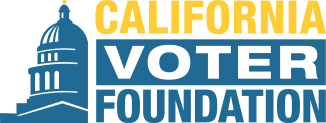Excerpts:
Final election results show almost 17.8 million Californians cast ballots in the election that ended on Nov. 3, the highest percentage of eligible voters to participate in a statewide election since 1952 and the third-highest percentage since 1910.
But this year’s participation by 70.8% of eligible voters may be even more historic due to the lower voting age. Since the passage of a constitutional amendment in 1971 to lower the voting age from 21 to 18, no California election has come close to turning out as many eligible voters.
“This was an election unlike any other in modern American history,” Secretary of State Alex Padilla said in a video posted online Friday afternoon. “And it would not have been possible without the contributions of elections officials and poll workers alike. Their work maintained the resiliency of our democracy during a global health crisis.”
As a share of registered voters, only the presidential elections of the 1960s and ‘70s saw a higher turnout of Californians. And in raw numbers of votes in November, no state came close: More than one in every 10 ballots in the nation was cast by a Californian. Estimates show more votes tallied in California than in 20 other states and the District of Columbia combined.
The statewide outcome was never in doubt at the top of the ticket. President-elect Joe Biden won 5.1 million votes more than President Trump in California, a larger margin than that by which Democrat Hillary Clinton bested Trump four years ago. Biden won 35 of the state’s 58 counties — amassing more than six times as many votes as Trump in San Francisco and edging out the incumbent president by 14 votes in rural Inyo County.
- - - - - - - - -
But no voting law was perhaps more significant in explaining November’s high turnout election as the pandemic-inspired decision to mail a ballot to each of California’s 22.3 million voters. Elections officials were concerned that a large number of in-person voters could overwhelm polling places that had to be redesigned to lessen the risk of COVID-19 infection.
“We looked out for our neighbors, our communities, our local elections officials. And our democracy is stronger for it,” Padilla said.
Final election results show almost 87% of the state’s 17,785,151 votes were cast somewhere other than a polling place or vote center. And almost 99.5% of those ballots were accepted, a historically low rate of rejection.
“Automatically mailing all registered voters ballots brought a degree of uniformity to California’s election that has been missing in recent years and made it easier to tell voters statewide what they should anticipate,” said Kim Alexander, president of the nonpartisan California Voter Foundation.
Processing and counting ballots lasted longer than usual, due to a one-time rule enacted by state lawmakers that allowed ballots postmarked by election day to be tallied if they were received by Nov. 20 — more than five times the normal grace period under California law. Though that unique rule change will expire at year’s end, the Legislature will consider an effort next year to continue mailing every voter a ballot.
A bill by Assemblyman Marc Berman (D-Palo Alto) would make permanent the mailing of ballots to all voters and require ballot tracking systems to be made available for all voters in future elections. Alexander said that other changes made for 2020, enacted to make this year’s reliance on remote voting easier, should also be extended.
“Going forward, we need to also ensure all Californians have equal access to early voting opportunities and official ballot drop boxes,” she said. (Full Story)

